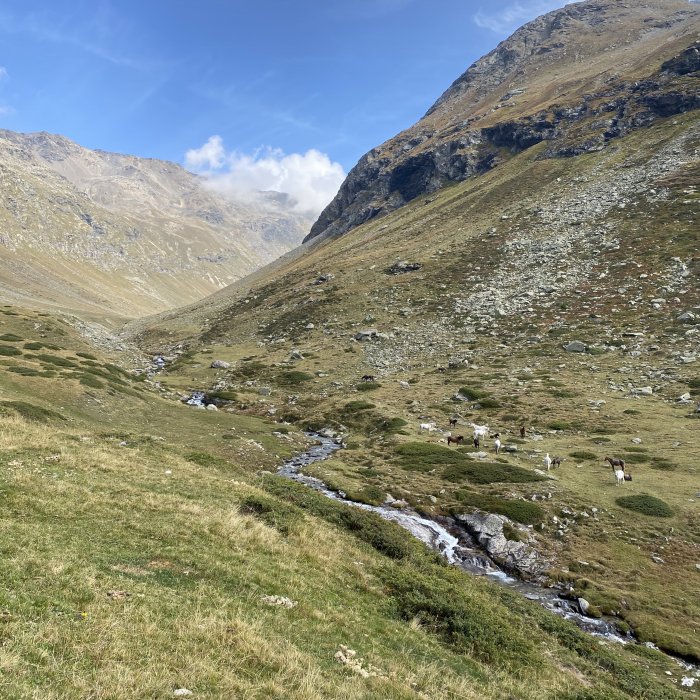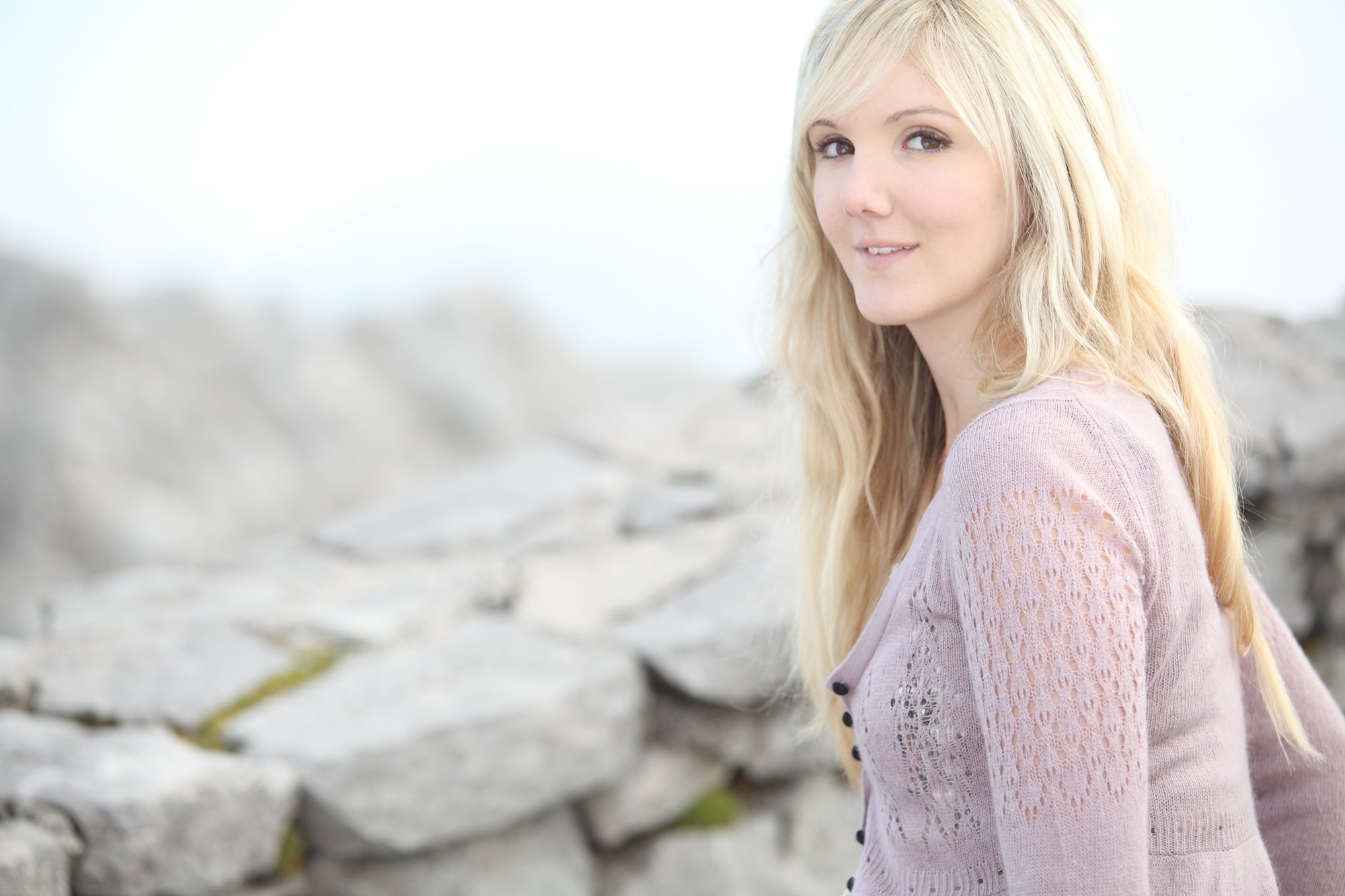There's a bleakness to the Bernina Pass - the desolation typical of roads that precariously connect lonesome mountain valleys. Rising to over 2,300 metres' altitude, this one binds the Upper Engadine region of Switzerland with Valtellina in the Italy's Lombardy. But it looks more like a ferry terminal to nowhere on the day we hike there, in late September. The Lagalb cable car is closed and in its car park, bordering the empty road, cars are lined up like they do to board seagoing vessels. Abandoned too are the pastures, which earlier in the week were bustling with cows. It's the end of the season, and a good day for a hike. Quiet, I mean. We have the place to ourselves.
We park up, heading out into the mountain air while drivers in the queuing cars peer listlessly out of their windscreens, wondering when the road will reopen. Our route will take us up and around Val Minor, which is like a moat to Piz Lagalp. As we plod uphill, we have a good view of the railway far below, and every so often a streak of red pulled taut alongside Lej Nair as the highest railway across the Alps, the Bernina Express, makes its way to Tirano. Occasionally a classic car hares along the road, like something from a James Bond car chase. The pass road must be closed for a rally of sorts.
Typical of many mountain passes, there is a lot of infrastructure up here. But look higher and all there is between you and the heavens are the sharp white peaks of the Bernina Massif. Soon, we round Piz Lagalp and emerge onto a grassy basin of tangled grass and strewn boulders, the path lost in the undergrowth. We cross over into another layer of the scenery, where we teeter on a steep slope that unfurls into an amphitheatre of gigantic mountains around Piz Cabrena and moody valleys splashed in hues of blue and grey. Gone is the infrastructure; we might be in the wilds of Scotland.
Lej Minor soon comes into view, at the bottom of a descent popular with mountain bikers. There's one on his way back up - lost, I wonder, or going for a second run. The wind is so ferocious that it's licking droplets of water off the surface of the lake and, when the fury settles, the depths glitter. A pair of rosy-cheeked Italian hikers approach and coo at Albie with a chorus of 'Ciao, bello'. We're on the edge of Italy and its warmth has crept over the border.
It's time for a lunch stop, and once settled behind an appropriate stony windbreaker, we pull out sourdough sandwiches and chestnut cake from Cafe Castinet in La Punt Chamues-ch. I look down Val Minor as the shadows of clouds move across the soft grassy groove like ghosts, and think it looks absolutely unrecognisable. The only other image I'd seen of it was in a photography hardback in our Airbnb: it was of the valley deep in snow, monochrome almost, with Lowry-esque figures on skis sliding along.
Following the stream out of the valley, we encounter a herd of ponies lazily basking in a pool of sunlight. They're Barb horses, one the the oldest but also rarest breeds in the world, bred by a local yard and allowed to roam here all summer long. It's an almost allegorical scene - these shiny beasts magnificent beside the rushing brook.
Before we know it, we've dropped back out at Lagalp. The 'ferry terminal' queues have disappeared, traffic is flowing again, and our car is alone in the car park. Red trains gently trundle past as the sun starts to sink behind Piz Bernina. Our hike took just three hours but seemed to extend into the wilds. That's the thing about the Swiss Alps - you're never far from infrastructure, but you're even closer to nature.
Plan your route here. We enjoyed this hike while staying in La Punt Chamues-ch, a great base for exploring the scenery of the Upper Engadine.







